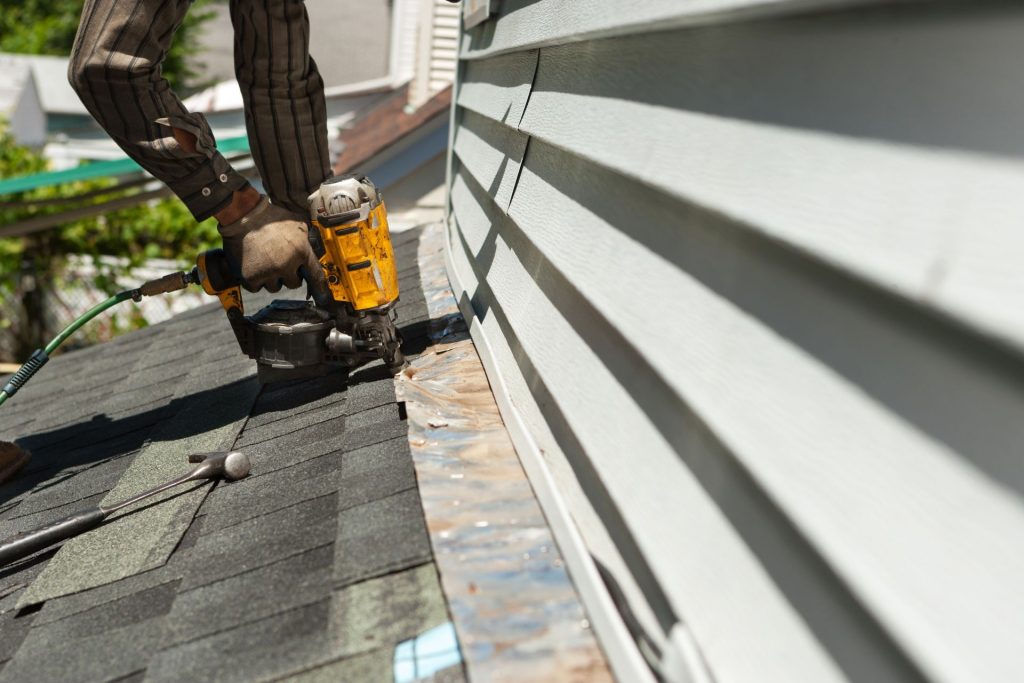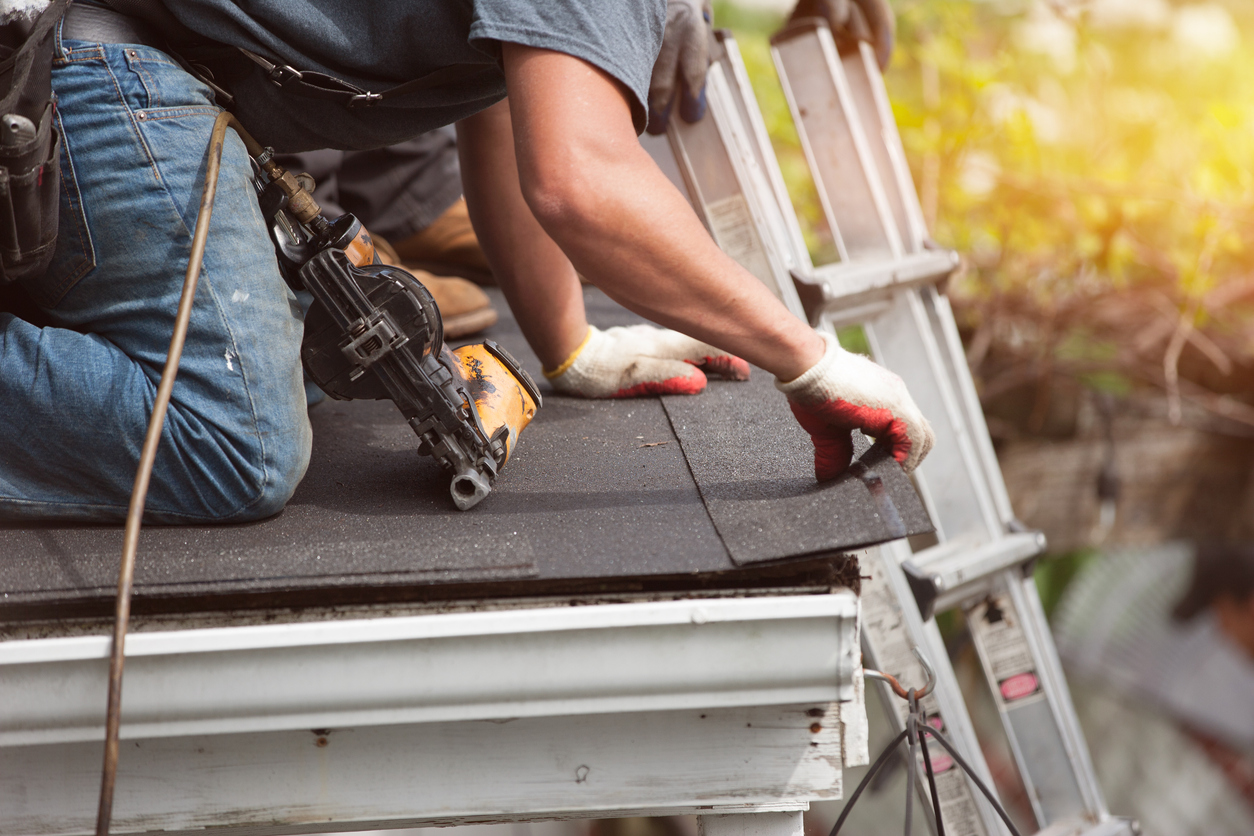Why Homeowners Prefer Keep Dry Roofing St Peters MO for Their Roof Covering Fixing Demands
Why Homeowners Prefer Keep Dry Roofing St Peters MO for Their Roof Covering Fixing Demands
Blog Article
Trick Factors To Consider for a Successful Roofing Installation: Accomplishing Longevity and Effectiveness
In embarking on the trip of roof installment, one must focus on key factors to consider to ensure both durability and performance. The choice of products, customized to endure neighborhood climate problems, plays a crucial role in maintaining structural stability. Just as essential is the style, which should fit correct water drain and offer appropriate assistance. Embracing finest techniques throughout installment can considerably reduce prospective concerns such as dampness build-up and power inefficiency. As we explore these facets, it becomes apparent that a successful roofing system installation is not merely concerning covering a framework but regarding crafting a resilient and lasting service. What are the important aspects that really make a distinction?
Picking the Right Materials

Environment plays a crucial duty in product option. In areas prone to heavy rainfall or snow, materials like asphalt shingles or metal roofing with high water resistance are advisable. Conversely, in hot climates, materials with reflective residential or commercial properties, such as great roof membrane layers or ceramic tiles, can assist minimize energy expenses by deflecting sunlight.
Budget considerations additionally affect product option. While premium products like slate or clay floor tiles use resilient efficiency, they include higher upfront prices. Nonetheless, they can verify economical in time due to their marginal upkeep requirements and prolonged lifespan.
Finally, the architectural design of the building should integrate with the roof material. As an example, standard homes may profit from wooden shingles, whereas modern-day structures could select sleek steel finishes. By very carefully weighing these aspects, you can choose materials that line up with both functional and visual objectives.

Comprehending Roof Style
Comprehending roof covering design is necessary in attaining a well-functioning and aesthetically pleasing structure. The style of a roof covering impacts not only the visual charm yet additionally the structural integrity and performance of the building. An attentively made roof covering can enhance the overall architectural style while making sure effective water drainage, insulation, and air flow.
Secret aspects of roof design consist of the pitch, shape, and structural assistance system. The pitch, or incline, identifies how successfully water and particles are shed from the roof covering surface area, affecting the lifespan of roof covering materials. Usual roofing shapes consist of gable, hip, flat, and mansard, each offering distinct benefits and aesthetic top qualities. As an example, gable roofing systems are preferred for their simplicity and effective water dropping, while hip roofing systems give outstanding stability in high wind locations.
Structural support group, such as trusses and rafters, are essential in dispersing weight and keeping the roof's stability. Correct design guarantees that the roofing can hold up against environmental tons and stand up to contortion. Additionally, integrating functions like overhangs and eaves can shield the structure's façade and enhance power performance by providing shade and decreasing warm gain.
Inevitably, a well-considered roof covering design balances form, work, and longevity, adding to the long-term success of the installation.
Climate Considerations

In hot and warm climates, roof covering products have to reflect, rather than absorb, solar heat to maintain energy effectiveness and stop too much thermal expansion, which can lead to material deterioration - Keep Dry Roofing St Peters MO. On the other hand, in chillier areas, products have to offer ample insulation to avoid heat loss and withstand freeze-thaw cycles that can cause breaking and other structural problems
Additionally, the option of color and finishing can substantially influence a roofing system's thermal performance, especially in areas with extreme temperature level variants. Neighborhood building regulations commonly use support on appropriate materials and designs, reflecting local environment problems. Consequently, a thorough understanding of weather problems is important for choosing materials and layouts that make certain a roofing's ideal performance over its life-span.
Setup Best Practices
Effective roof covering setup is a vital component of making certain lasting sturdiness and performance. Following best techniques during installment not only safeguards architectural integrity yet also decreases expensive future repairs. Firstly, picking the right products is paramount. Utilizing high-quality roof shingles, underlayment, and blinking tailored to the certain climate and structure layout will boost the roof's durability.
Similarly crucial is the prep work of the roof deck. Guaranteeing that the deck is clean, completely dry, and structurally audio prior to installation avoids issues such as leakages and early wear. Correct air flow is another key consideration, as it reduces wetness build-up and thermal anxiety, therefore prolonging the roofing system's lifespan.
Precision in measurement and alignment during the installation process is essential. This involves accurate placement of shingles and meticulous attention to overlapping, which protects against water ingress. Employing professional, experienced labor guarantees these standards are met, reducing the threat of mistakes that might jeopardize the roofing system's efficiency.
Energy Efficiency Techniques
Enhancing a roofing system's energy performance is a critical factor to consider for decreasing energy prices and environmental impact. By picking ideal products and technologies, homeowners and building contractors can dramatically boost the thermal performance of a roof, hence lessening energy intake. One of the primary approaches includes the usage of reflective roof materials, which disperse more sunshine and soak up much less warmth. This can bring about a considerable reduction in cooling down go to this site expenses, specifically in warmer environments.
Additionally, the unification of adequate insulation is important in preventing warm transfer in between the inside and exterior of a building. Insulation products with high R-values, such as spray foam or inflexible foam boards, work in keeping a consistent indoor temperature level, therefore optimizing a/c system performance.
Furthermore, the integration of photovoltaic panels on roofs not just generates renewable resource however can additionally provide shade, additional minimizing warmth gain (Keep Dry Roofing St Peters MO). Advancements like cool roofing systems, which use finishes to mirror even more sunshine, are additionally gaining popularity for their ability to decrease roof temperatures
Final Thought
To conclude, accomplishing an a fantastic read effective roof installation necessitates a detailed technique that incorporates the choice of top quality materials tailored to details weather problems, thoughtful style considerations for optimum drainage and structural stability, and adherence to careful setup methods. These aspects collectively ensure the avoidance of dampness build-up and thermal tension, view it thus enhancing the roof covering's durability and performance. Integrating techniques to improve power effectiveness even more contributes to lowering maintenance requirements and decreasing energy consumption over the roof covering's life expectancy.
Report this page